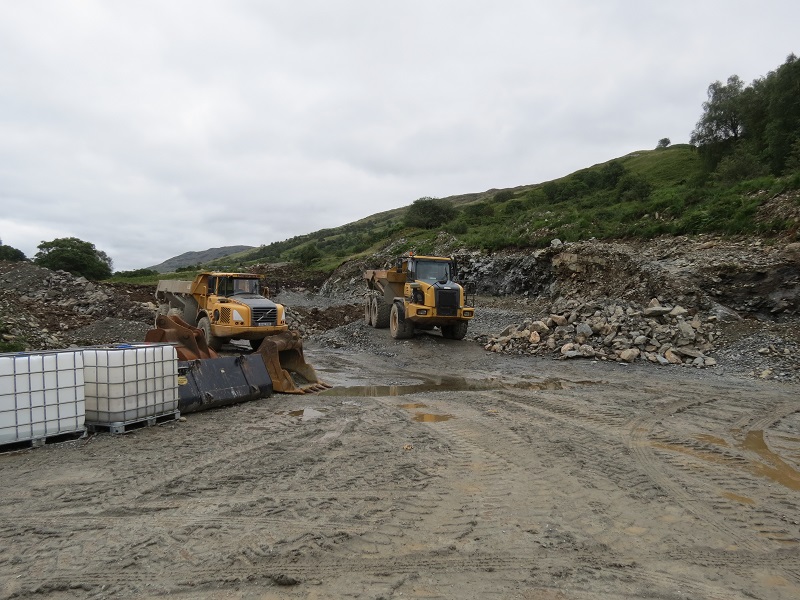
Following James Fenton’s fine post “Just Say No ” and earlier posts on the destruction in Glen Falloch (see here and here) I wanted to write a bit more about the permanent impact that the construction of these schemes is having on the landscape. This is not just about hydro schemes of course, and issues surrounding the creation of hilltracks for example apply to windfarms, the new unlawful hilltrack created at Cairngorm by Natural Retreats and the hundreds of kilometers of new tracks being bulldozed across our moorland both in our National Parks and outside (do please report these to the LINK hilltracks campaign – see post by George Allan). However, in the last few years hydro-power has been generally seen as a “good thing” and its impacts benign. I assumed this too, but having looked at the evidence of the Glen Falloch schemes, which the Loch Lomond and Trossachs National Park Authority have claimed as exemplars of sustainable development, have lost that faith.
In order to function, run of river hydro schemes need to channel water downhill through a pipe to the turbines that generate the electricity. In the small burns found in the Scottish Hills this requires the construction of an intake dam as well as installation of a pipeline and the current and cheapest method to do this is to construct a track up the hill from the hydro power house to the intake. While the Loch Lomond and Trossachs National Park Supplementary Planning Guidance Renewables-finalstates such tracks should take the line of an existing tracks where these occur, the reality is because of the size of the “earth” moving machinery a much wider track is required. While the LLTNPA Guidance also suggests that “On soft ground, consider techniques such as temporary floating or rafted tracks to avoid habitat destruction, erosion and flooding” there is no evidence of such techniques being used in Glen Falloch. Instead, tracks up to 7m wide have been created up the hillsides. These tracks need a firm base to support the heavy machinery which requires large amounts of aggregate material. While some of this has been taken from the hillside, particularly from moraine, this is often not possible because of the nature of the ground and so new quarries are created (as illustrated in the first photo). The construction of the access tracks required to install these schemes has therefore generally required the transportation of large amounts of new material up the hill.
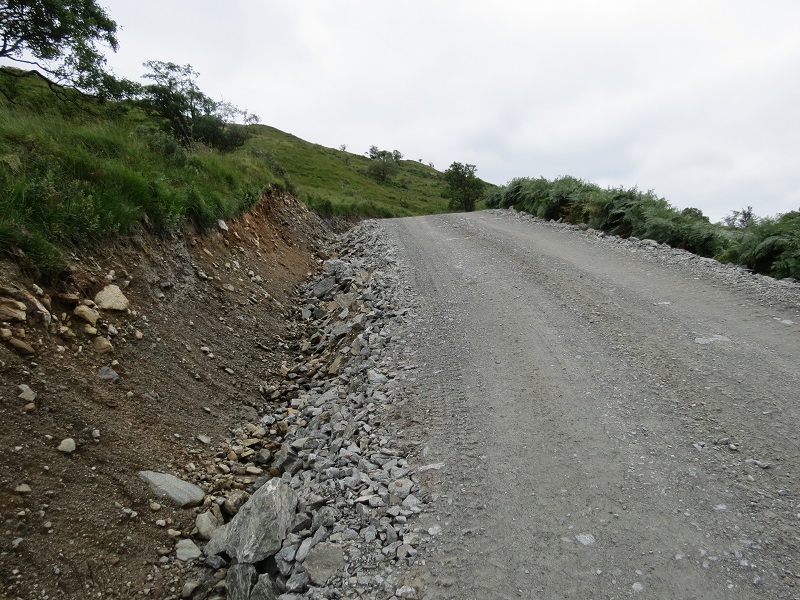
The LLTNPA’s Guidance says the following about this:
“It is expected that any new access tracks required for the construction will be fully restored [my emphasis] unless there is overwhelming reason why they should be retained for the operational phase of the development”.
To fully restore this track would require the materials that have been imported to be returned to the appropriate quarry or “borrow pit”. There is no evidence of this happening.
Instead, the new material imported to construct the track is, once the construction has finished, flattened out, reprofiled and then covered up . This has a permanent impact both on the landscape and on the ecology (the ecological impacts will be subject of a forthcoming blog from James Fenton).
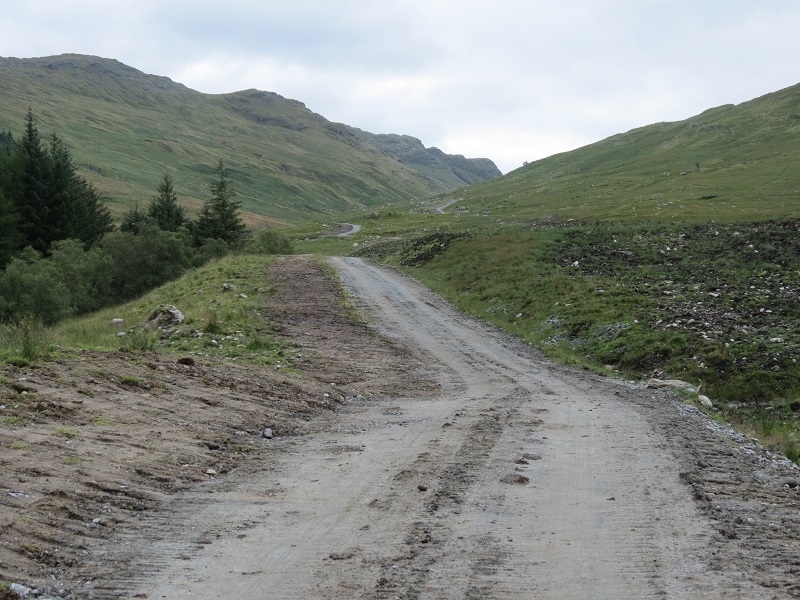
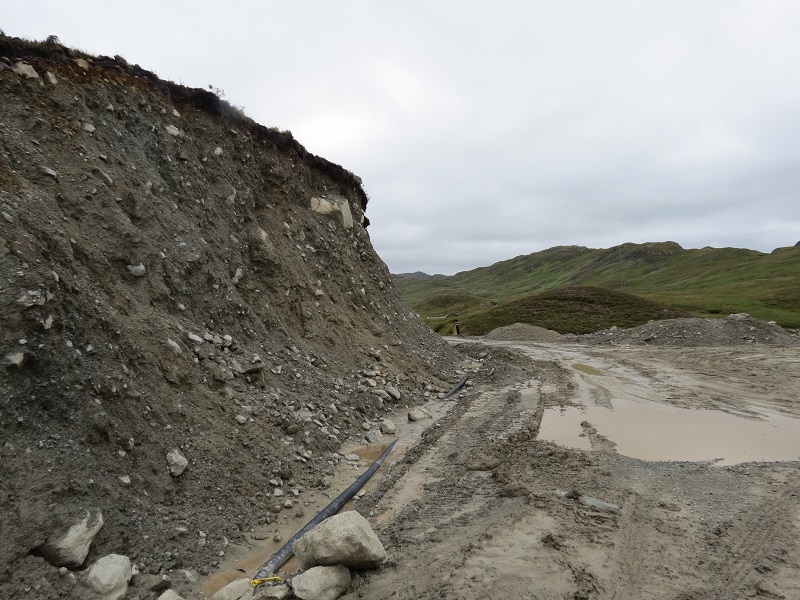
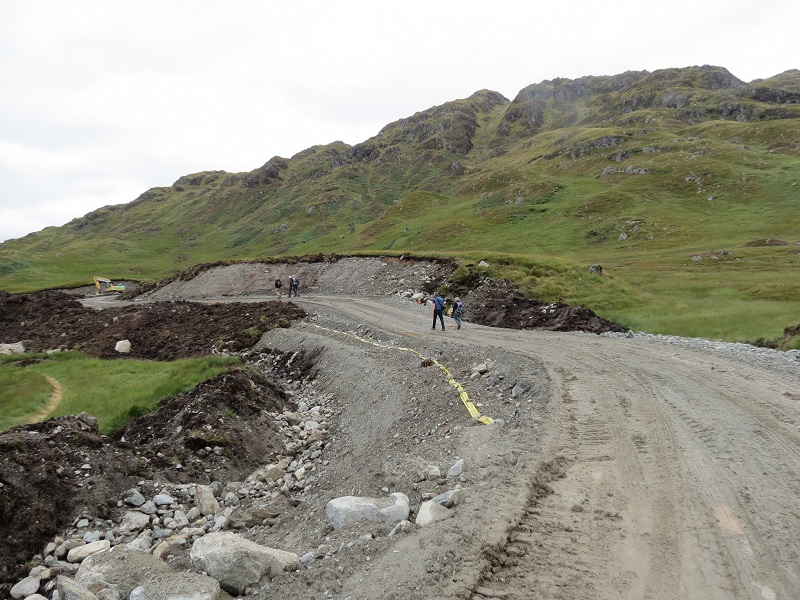
Further surplus material is created from the digging of the trench for the water pipes. Full restoration would require the removal from the hill of the material displaced by the installation of the pipe (to be used for example in road construction). Instead this material is added to the material that is imported and taken from the moraines and then reprofiled.
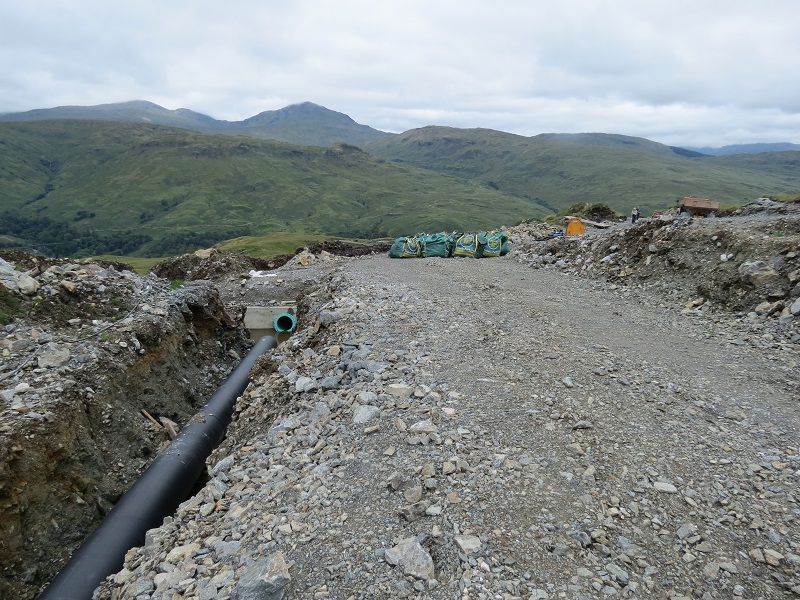
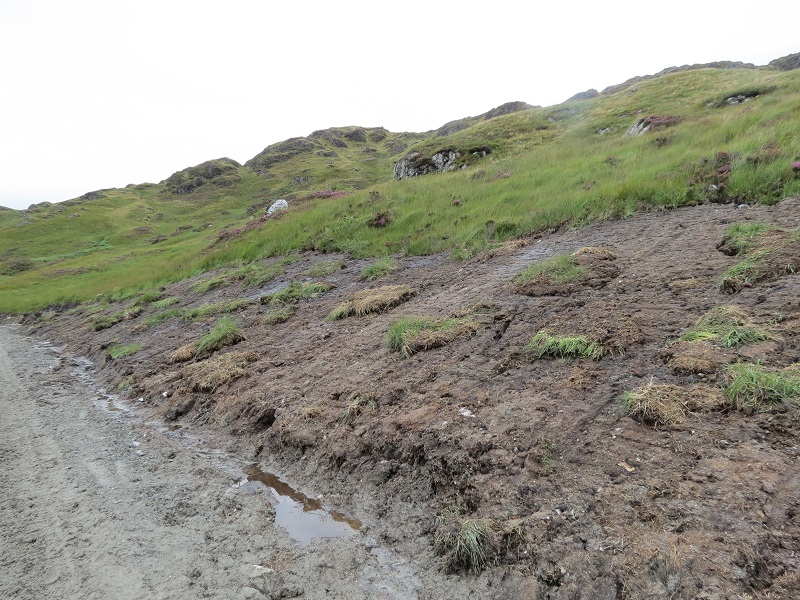
Its not just the track that creates destruction. I had assumed that the intake dams would be built between natural features and indeed the LLTNPA renewable guidance suggests this: “Choose a weir location which is naturally well screened and where a weir structure can be readily introduced.” The Ben Glas pipeline has two intake dams because it has to cross a slight rise between the Ben Glas burn and the powerhouse in Glen Falloch and for the water to flow through this the intake/s had to be located above where the main burn splits. While one is situated between natural features, the other has required extensive grounds excavations there was nowhere “natural” to locate it. The intake pool has literally been dug out of the ground. More than double the damage to the land, which raises further questions about why this scheme was ever approved.
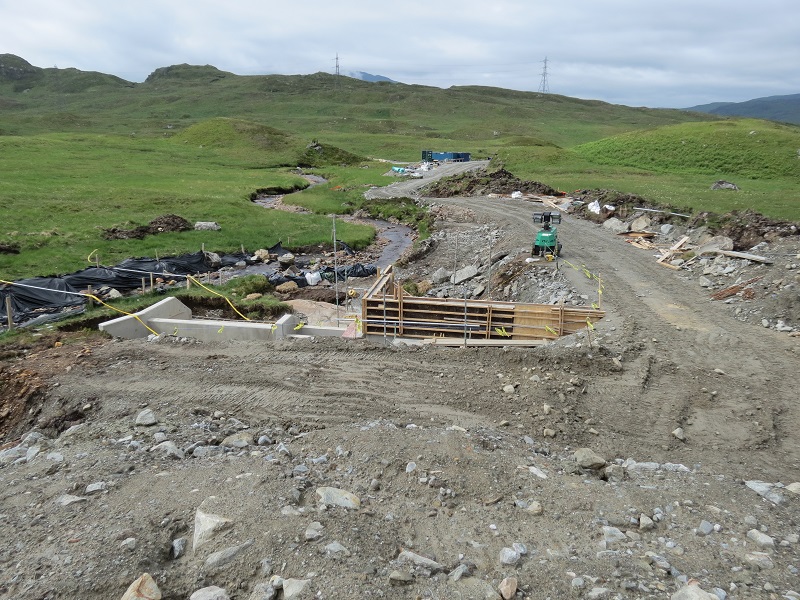

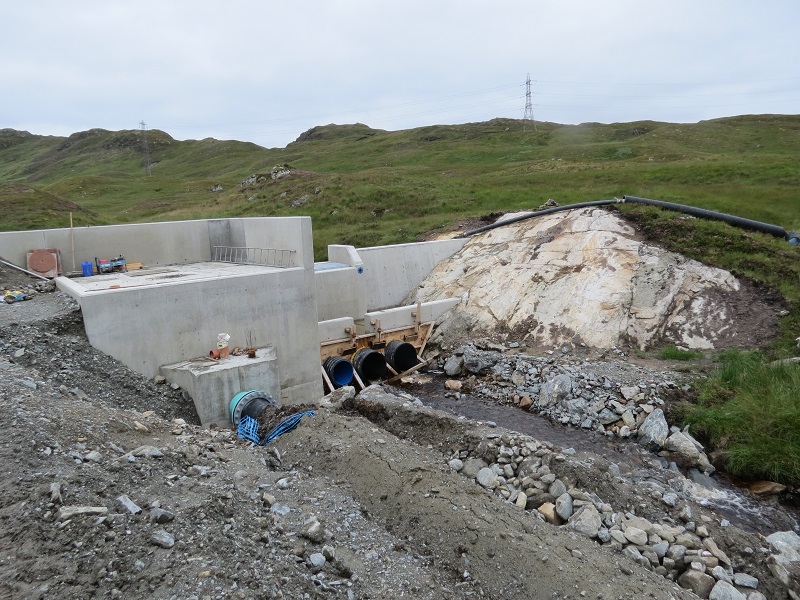
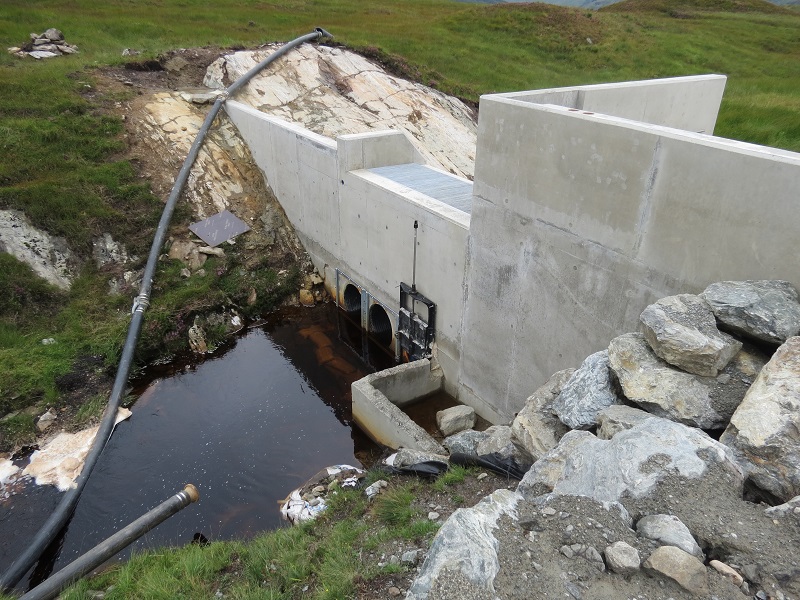
While bridges would not normally be required high up on run of river schemes, because there are two intakes, the pipe from and track to the first dam needs to cross the burn which currently flows down from the second dam.
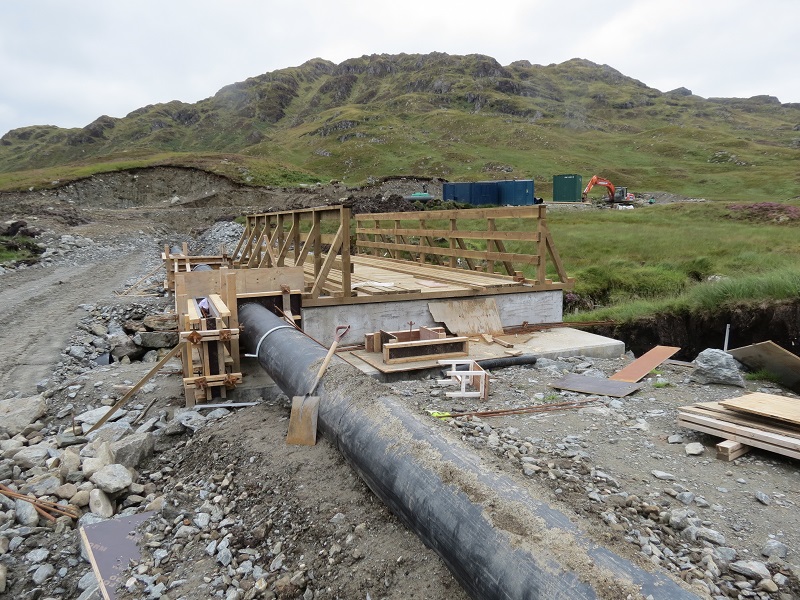
These photos show that any talk of restoration of the damage cause by hydro schemes as currently constructed is misleading. They create permanent change to the landscape. There can be no restoration, only amelioration of the impacts (the subject of my next post). This is important for the debate on wild land, land that should be free from development and where natural processes should be the dominant influence on the landscape.
While the construction of hydro schemes brings alien materials into the landscape, their operation diverts water from the burns that run through it. I had previously questioned how the LLTNPA could possibly have recommended approval for this scheme when it would remove water from the Eagle Falls, waterfalls being so important to tourism and for many people where natural beauty starts. I have since discovered that the Glen Falloch Estate is intending that the scheme will not operate in the day in order to maintain the flow of water down the Falls. It speaks volumes that it is the Estate, rather than the LLTNPA, which has taken this initiative though whether it happens in practice, because it will lead to a considerable loss of income, remains to be seen. The reduced flow in other burns though, will be noticeable to walkers.
Should run of river hydro schemes be allowed in our National Parks?
I would have liked the LLTNPA to have taken a far more critical view than it has on run of river hydro schemes. Unfortunately, it has been driven by Government targets and only too ready to classify hydro schemes as sustainable development (hence the pat on the back it has given itself for its Guidance) without any proper consideration of the conservation impacts, which in case of conflict should be put first. This, I believe, is in no small part because the LLTNPA has been too ready to accept the myth that all the damage created in the construction of these schemes can be restored. It can’t and that means there are some places where these schemes should not be allowed, where the National Park should, as James Fenton put it, “Just Say No”.
If our National Parks were functioning properly they would have been leading the debate on this. As it is, the only thing that I can see that separates the LLTNPA from other Planning Authorities is its best practice guidance which is about how the damage caused by these schemes can be ameliorated (and subject of my next post on Glen Falloch).